Magic Cards With Confusing Art
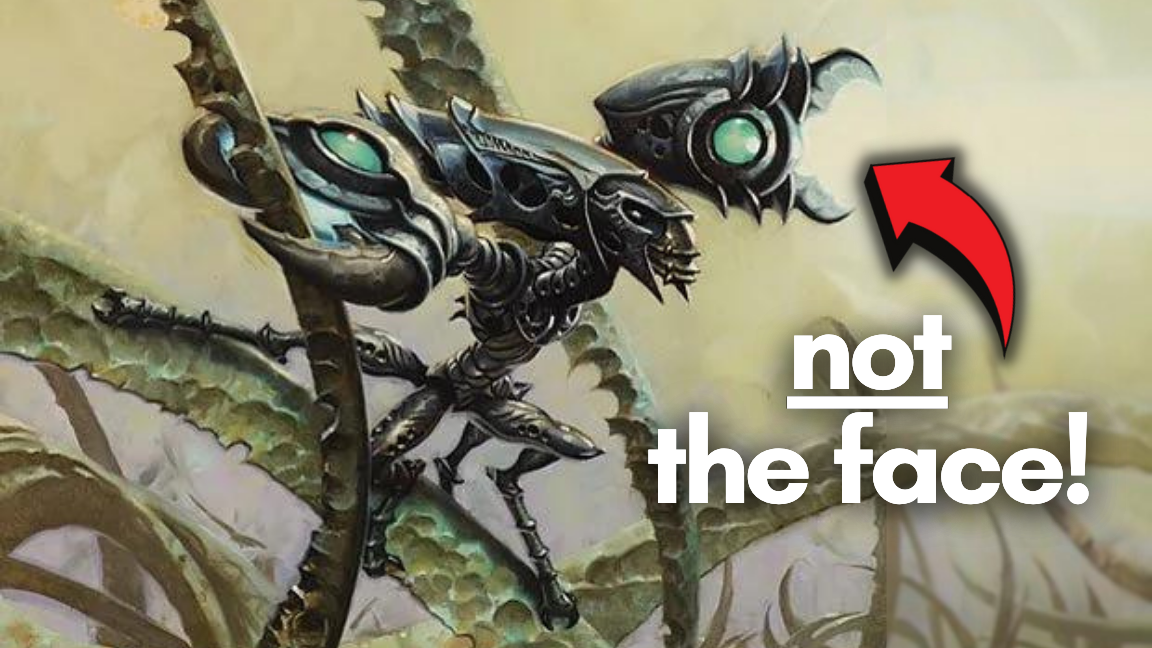
Signal Pest
In the history of Magic: The Gathering, there have been thousands of unique pieces of art created by hundreds of artists from around the world. It's one of the reasons the game has had the impact and longevity it's enjoyed.
Throughout the three decades of Magic, artists have experimented with styles, mediums, and techniques to bring us players the best fantasy art possible, but no matter how the art is created, it always ends up being delivered to players via a standard-sized playing card. That's no complaint, of course, but rather a fundamental aspect of Magic and how we as players experience that art. When artists create their pieces, they know it'll be squished down to fit within the frame of a Magic card.
Some artists, like Drew Baker, take that as a challenge. Recently revealed card Winter Moon
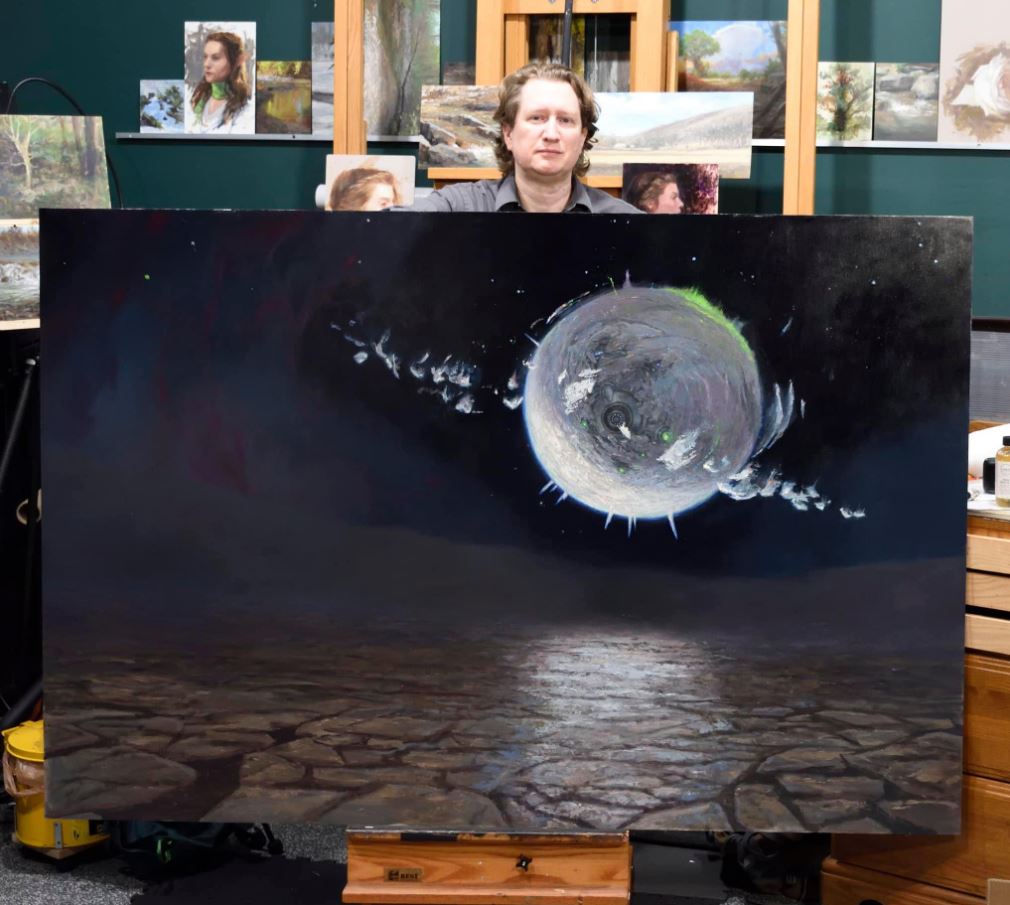
Unfortunately, not every piece of art is as easily grokkable when presented on a Magic card. Even if you've seen them hundreds of times, there might be art your brain just doesn't understand. And what you might think is obvious in a piece of art might be interpreted wildly different by others. That's no fault to anyone, but it's still fun to reset your eyes and see what's actually there, instead of what you think is there.
And apparently when it comes to Magic art, when your eyes get confused, they default to "is this a bird?"
Divinity of Pride is not a bird
Greg Staples is one of Magic's most prolific artists and is credited with almost 350 cards since he started illustrating for the game in Urza's Saga.
At a glance, you'd be forgiven for thinking that Divinity of Pride is some sort of avian creature. While we're conditioned as Magic players to assume that winged humanoids are usually Angels or Demons, the type line of "Spirit Avatar" doesn't aid in our interpretation too much. Shrunk down for a Magic card, the art for Divinity of Pride loses a few key details, namely the hidden angry banshee-like face and the "beak," which is actually a sword held in the figure's right hand.
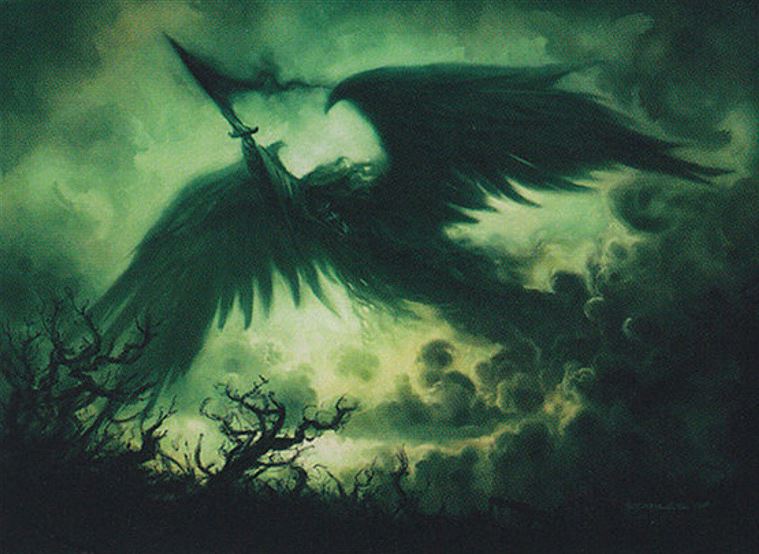
The rest of the cycle from Eventide are equally enigmatic, like Overbeing of Myth
Signal Pest's "face" is actually a claw
Going from one prolific, veteran Magic illustrator to another, Mark Zug's been a mainstay in the game's art for just a little longer than Greg Staples, and among his nearly 200 cards is probably best known for veritable classics, like Gaea's Cradle
And then there's Signal Pest:
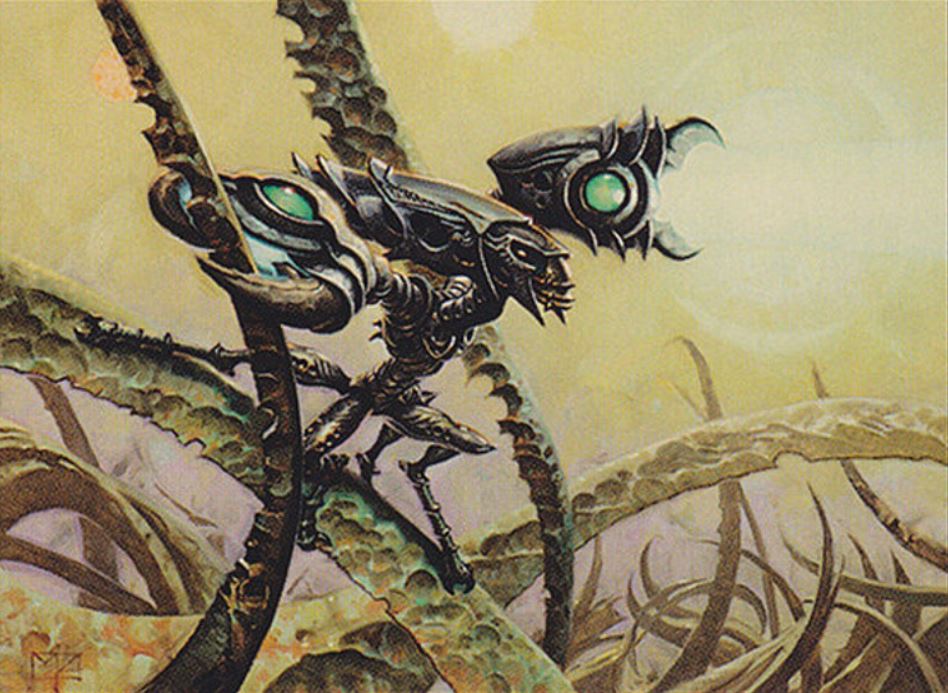
Many, many Magic players have held onto the belief that the lil' guy known as Signal Pest was facing to the right side of the frame and screaming, with a wide-open green eye in the center of its head. But that's simply not the case.
As we can see in a larger version of the art, it's actually Signal Pest's claw that people have interpreted as its head, with its actual head, similar to a Xenomorph's, in the middle. It's also got four legs sticking out at right angles from its torso like the wheels of a medical IV bag pole, but those are usually ignored. Despite the existence of a promo version of the card with art by Chippy

What even is Palinchron?
Reserved List villain Palinchron has been confusing combo players and their opponents for a quarter-century at this point, and there's still no definitive interpretation of what exactly the thing is. We know it's an Illusion, so it's likely that the ambiguity is sort of the point.
There's been plenty of debate over the years about Palinchron's anatomy. Is it... a bird? Whereas in real life, all things become crab, in Magic, all things become bird. But Palinchron isn't a bird, it's an illusion. Of a bird? Who knows. Here's the art:
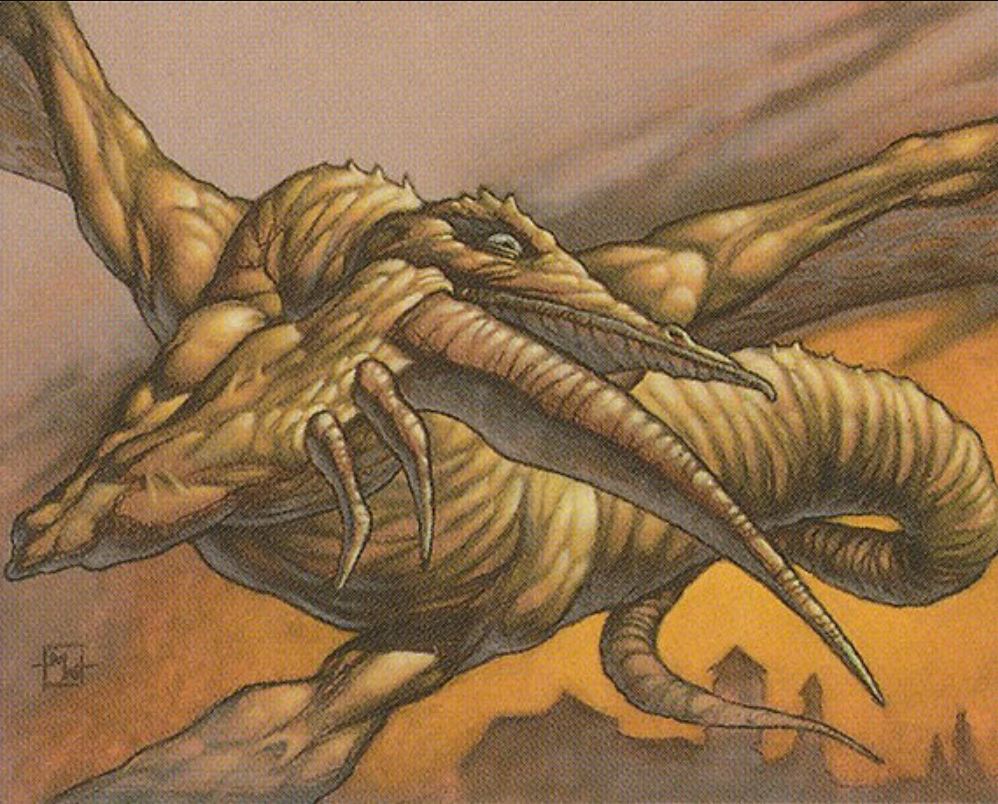
Popular interpretation suggests that the "beak" of Palinchron is actually a trick of perspective. The bottom "jaw" is actually a Scyther-like talon right arm, with the other arm jutting out from below and out of the frame. The other two appendages are likely wings. Here's a little mockup courtesy of a Reddit post from six years ago:
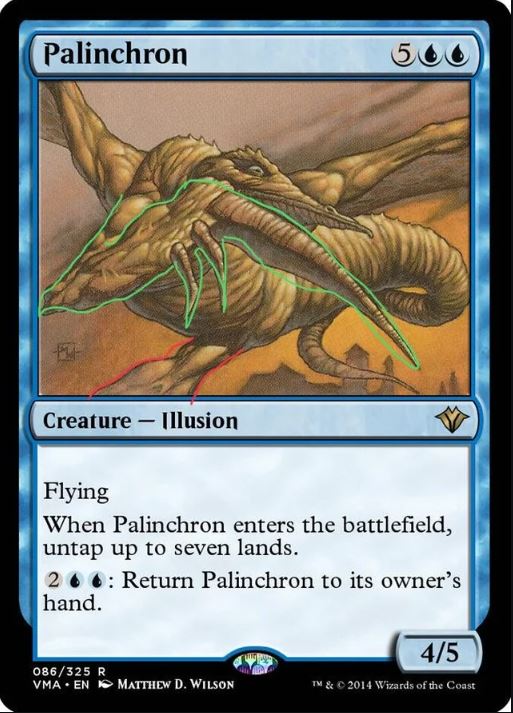
The green lines are the left arm, and the red lines highlight the right arm. Anatomically, Palinchron is more similar to a dragon than it is to a bird. But the fact of the matter is the whole thing is just a mess of body parts, which is exactly the point. Even the name is a riddle of sorts, with "palin" meaning (in etymological terms) backwards, and "chron" implying time. So Palinchron, in essence, means to reverse time, which it does by untapping lands and bouncing itself back to your hand. In other words, there are layers upon layers to Palinchron that reward consistent peeling.
Memnarch has a tiny face
Here's one that once upon a time was much more misinterpreted than it is now. Since Memnarch appeared in Darksteel way back in 2004, most people gave him a quick once-over and determined that he's a faceless golem-like guy on four spidery legs.
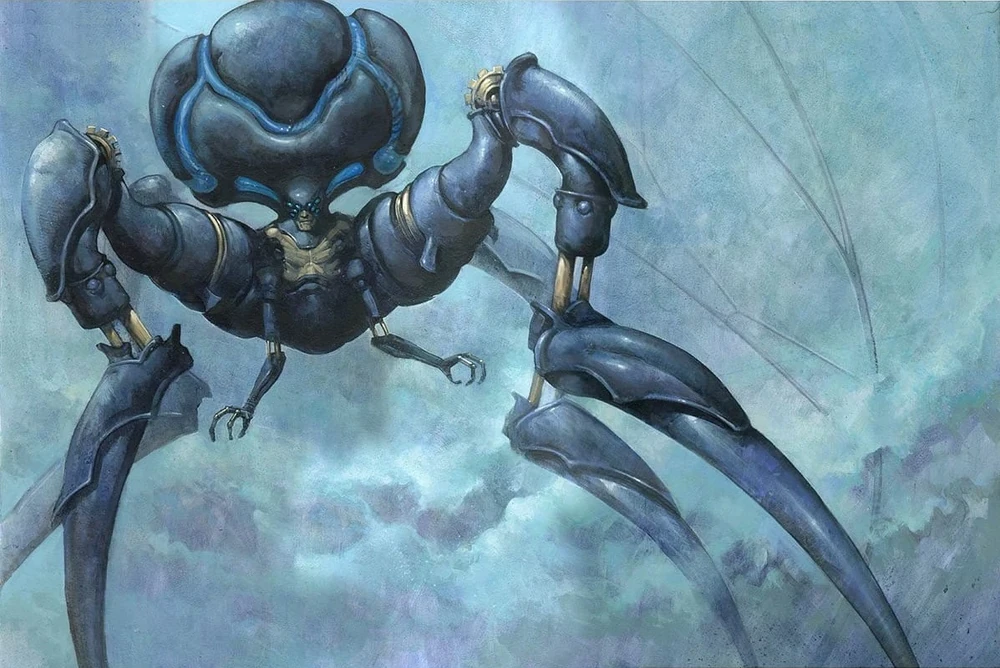
But for those with a more studious eye, it became clear that Memnarch's much creepier than that, and you needed to be deeply invested in the lore of the original Mirrodin cycle to know that it's actually Memnarch on Second Sight
And if you still can't see it, here's a style guide image sourced from MTG Wiki:
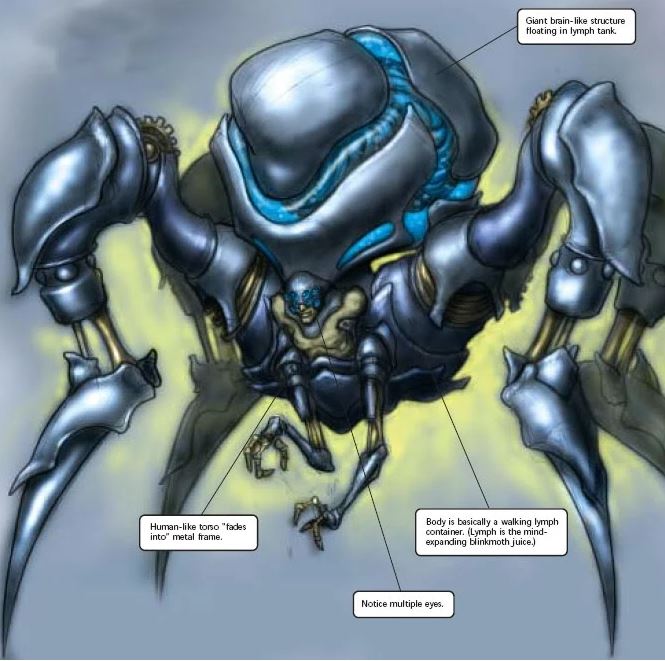
And for two decades, that was that. Either you saw Memnarch's tiny face and body squished between the gigantic bulbous cranium and the spider legs, or you didn't. It wasn't until a Secret Lair reprint only a month ago did we get a new interpretation of Memnarch
At least no one mistook him for a bird I guess.
Dragonlord Dromoka has a massive chin, not a massive beak
You have to look very closely to see exactly what's going on with Dromoka's facial area. Of course, with thousands of new cards releasing every year, sometimes there just isn't enough time in the day to look closely at anything. But that's what we're doing today, so take a closer look at Eric Deschamps's rendition of Dragonlord Dromoka from Dragons of Tarkir:

So you're forgiven if you thought that Dromoka's face is avian in nature, greyish and bony, tilted downward and ending in a beaky point. What you might have thought was a whole face is actually just her chin: the eyes and nose are the darker, scaly bits atop that protruding chin. In other words, Dromoka might be related to Robert Z'Dar, but that's not as of yet confirmed in lore. It doesn't help that there's a dark line right where the "eyes" would be if indeed that chin were Dromoka's whole face.
And Richard Kane Ferguson's interpretation
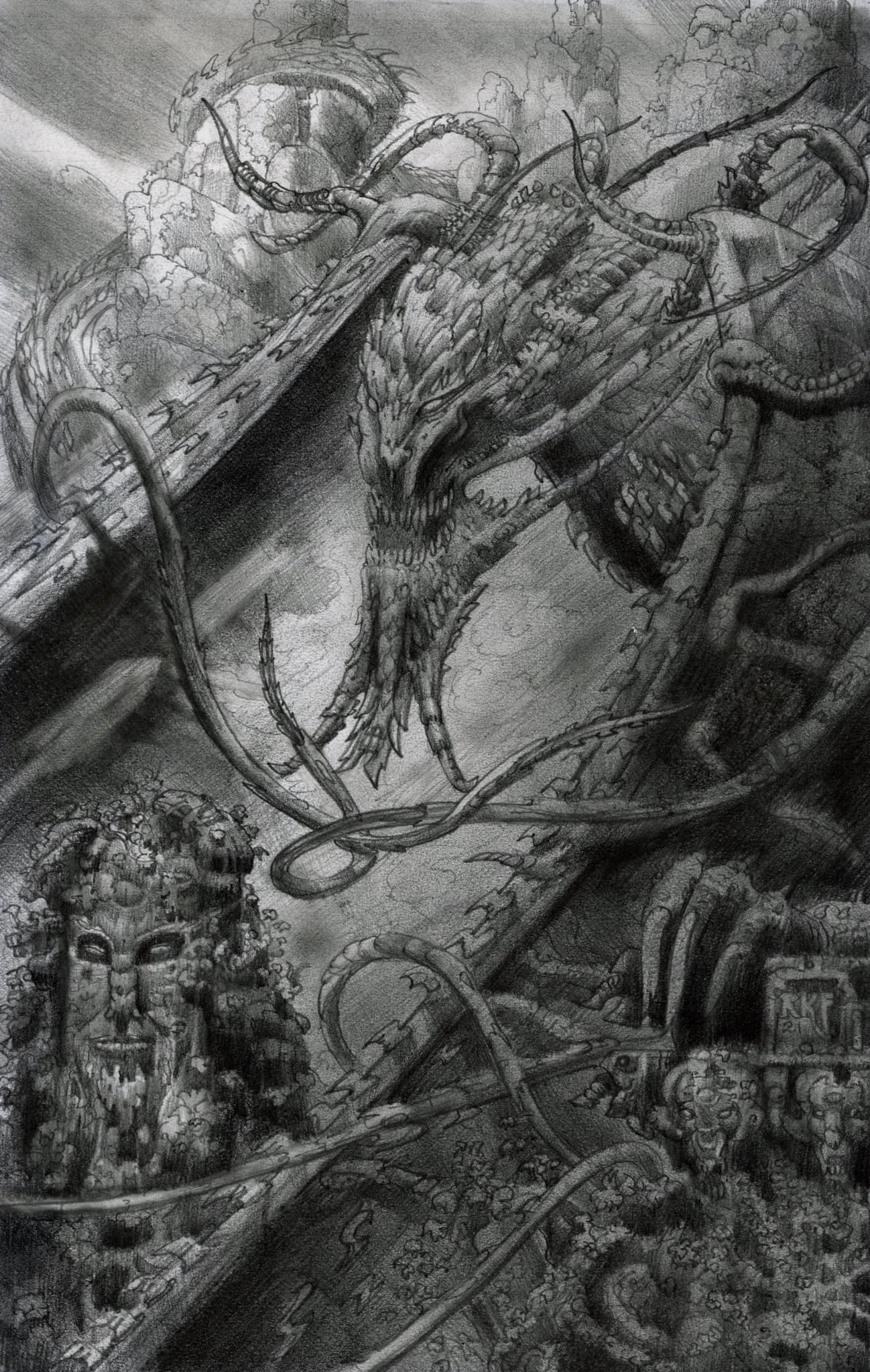
Wrexial, the Risen Deep is not Cthulhu
It seems that Eric Deschamps is a repeat victim of misinterpretation, as his art for Wrexial, the Risen Deep is also commonly misunderstood.
With a palette of dark, cool colors, the shrinking down of Wrexial to fit within the frame of the card has led to some important details becoming blurred. But if you look really closely, you'll see that Wrexial isn't a tentacle-faced monster looming out of the sea and facing left, but rather a tentacle-faced monster facing right-center:
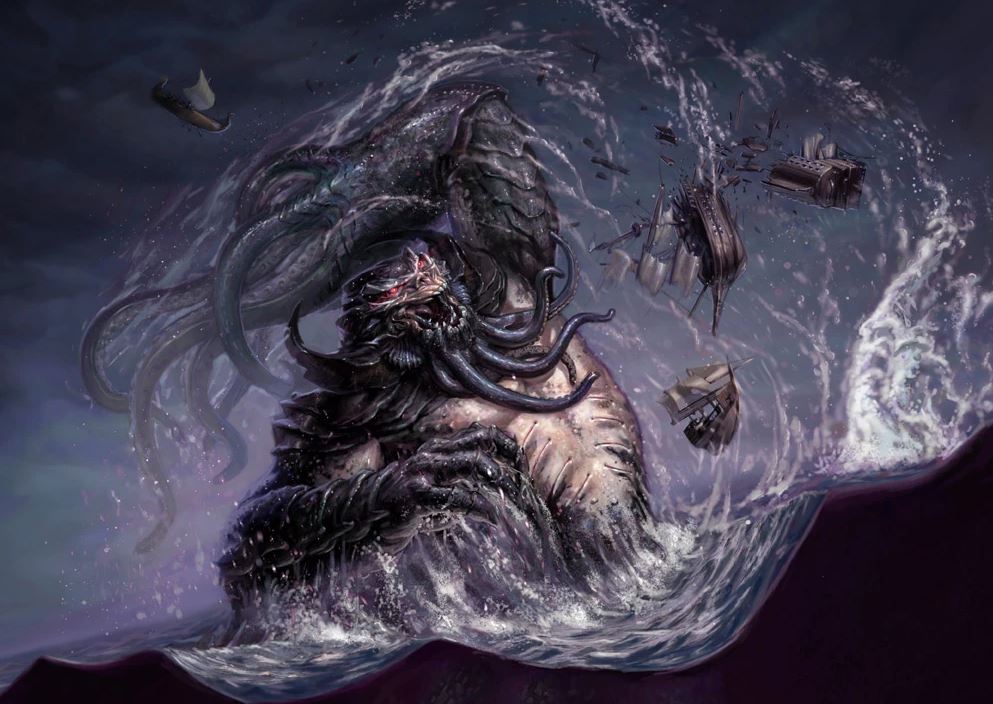
It seems obvious when seen in hi-res and bigger than a postage stamp, but Wrexial is much more a wet King Kong than he is Cthulhu. To the boats being flung around willy-nilly, it's a distinction largely trivial.
Like Dromoka, Wrexial also has a Secret Lair version that takes a lot of artistic liberty with the original artist's depiction, as seen here by Alexandre Chaudret
Tarmogoyf's holding a guy
Tarmogoyf is probably one of the most looked-at Magic cards of all time, but that doesn't mean it's actually seen.
What exactly is going on in Tarmogoyf's original art is up for debate, as the color palette and tiny nature of it leave a lot of room for interpretation. What can't be debated, however, is that there's a guy in there.
It's hard to tell, but what you're looking at is the 'goyf holding the little man in its right claw, and in the center of the art is its face, dominated by a large open maw:

I've added some color-coded lines to help your eye make sense of the 'goyf. The blue line is the open, teeth-lined circular mouth, while the orange lines are outlining downturned mandible plates, kind of like what you might see on an antlion. The magenta lines are the 'goyf's arms, and the googly eyes are just for fun.
It's likely that Justin Murray took inspiration from the original 'goyf, Ice Age's Lhurgoyf

Since Future Sight, 'Goyf has seen two other versions, courtesy of Ryan Barger and Filip Burburan. Both seem to have eschewed human meat for venison, but the creature's giant maw is now the focal point, whereas in the original by Justin Murray, the enigmatic anatomy takes fore. But those larger mandibular tusks are present all the way through, even into the present, like in Urborg Lhurgoyf
Blood Artist is looking at you (yes, you!)
I think we all know the what of Blood Artist, at least in terms of the original, Avacyn Restored art. It's a vampire artist painting with blood. A "blood artist," if you will.
But most of us assume that what we're seeing is the artist in question doing said art, or in other words, looking at the canvas. That's not the case. The artist is actually looking right back at you. Here's a hi-res, brightened version of the classic Johannes Voss art:
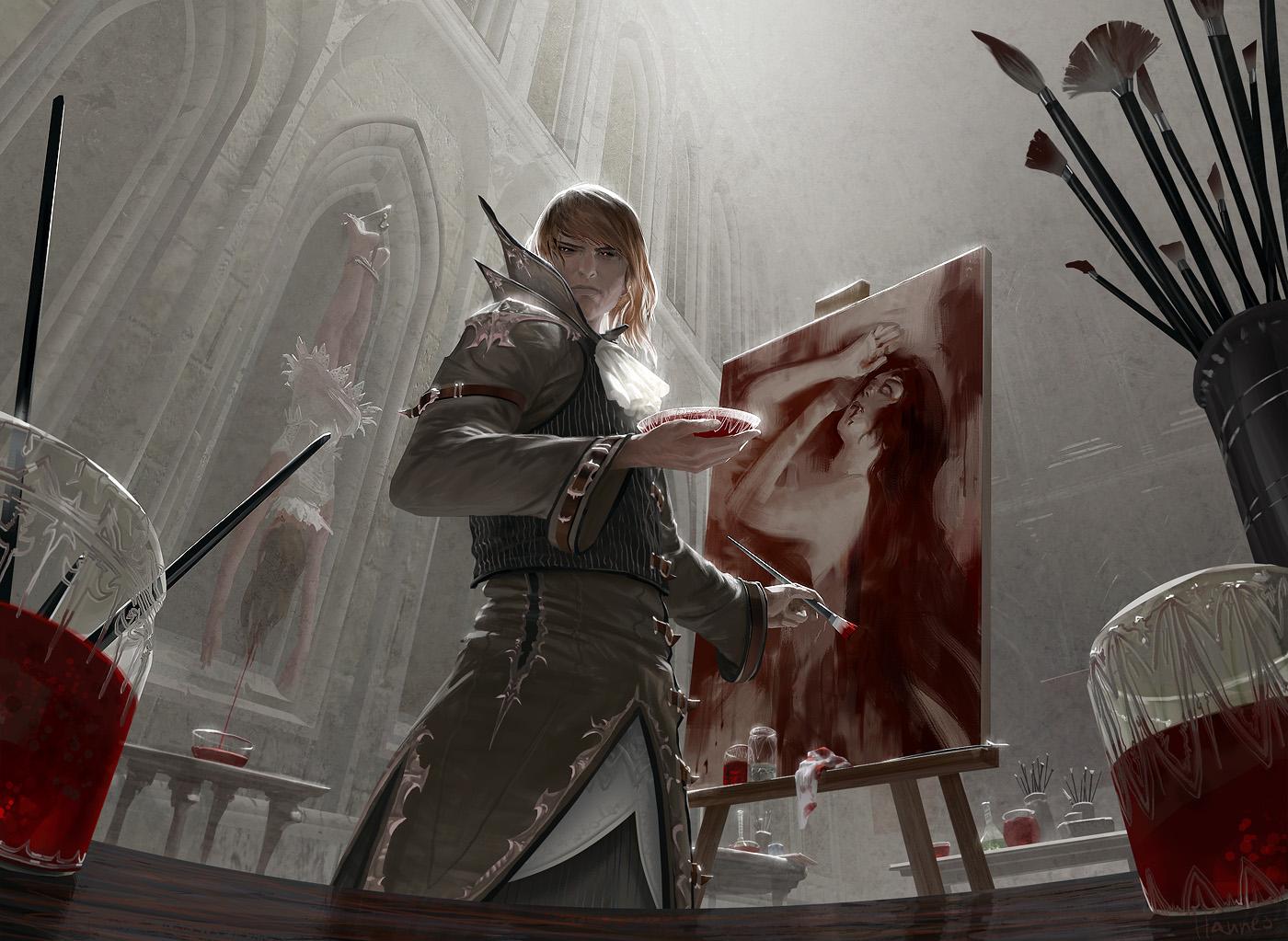
Seeing this probably illuminates for you even more than the artist's viewer-facing scowl. There's also what he's painting, which is not a bunch of blood-red blobs but another vampire sleeping off a hemoglobin bender. We can also see where the blood artist is sourcing his paint in the background. That's a lot of detail lost in the process of shrinking the piece down to card size.
Most Magic card arts feature scenes in progress of action, so the idea that the subject of that art seems aware and looking directly back at the viewer is unusual. It's a trait carried through various versions of Blood Artist, though, courtesy of LA Draws
Abrupt Decay is more than a mess of metal
This one might be more appropriate for an "art trivia" article rather than a "misinterpreted art" article, but Svetlin Velinov's original depiction of Abrupt Decay isn't just random bits of metal and light falling apart. It's actually showing the untimely end of a Nivix Cyclops

I'm just glad that, from a mechanics standpoint, Abrupt Decay can target and destroy a Nivix Cyclops, because otherwise that would be pretty embarrassing.
Seeing what you choose to see
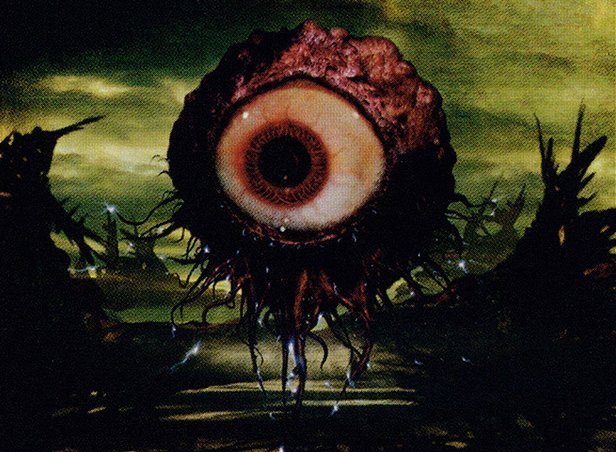
And with that, we'll leave the rest up for interpretation. With the sheer number of Magic cards out there, and more and more coming every month, what's going on in the art truly is in the eye of the beholder. Are there any examples of cards you just didn't see the way they were meant to be seen? Let us know!